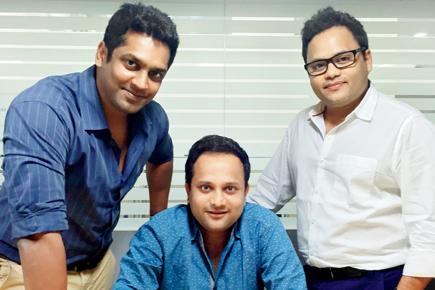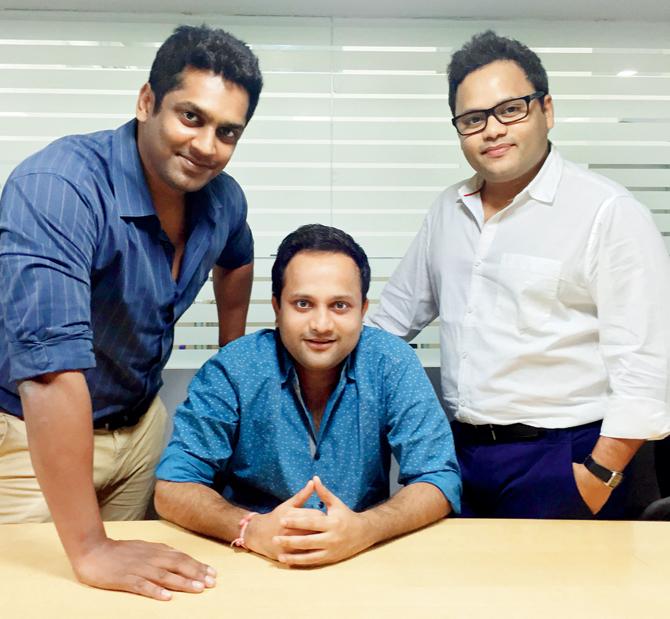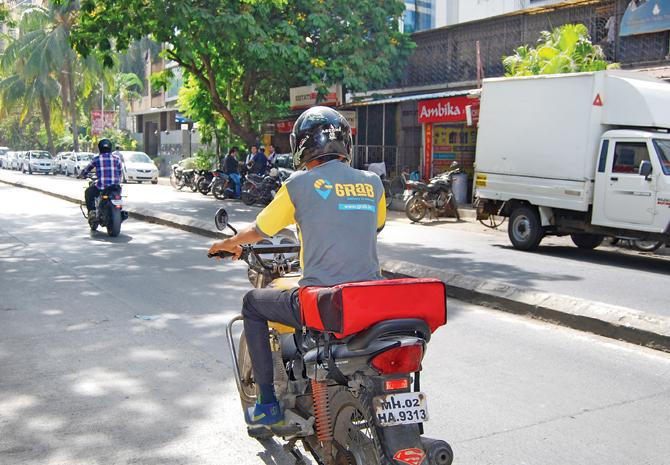Grab.in, is a local food-logistics start-up that offers a Web-centred food delivery network, to help deliver food to your doorstep in time

Founders of Grab.in, Jignesh Patel, Nishant Vora and Prakshit Sanghvi
In modern e-commerce ventures, everything is automated — from billing and processing an order to dispatching it to its destination. This also allows the consumer to track every movement of their purchase. Grab.in makes the same technology available for the food industry offering eateries a grid of delivery boys who get their food delivered to customers within 20 minutes from dispatch with real-time tracking along the way.
ADVERTISEMENT

(L-R) Founders of Grab.in, Jignesh Patel, Nishant Vora and Pratish Sanghvi
How it works
Started in 2012, this Mumbai-based start-up offers a grid of delivery helpers available near an eatery's location. An eatery requests for a delivery boy using its online platform (this can be integrated into a point-of-sale station as well), and he/she arrives there to pick and deliver the food to its destination. "It's similar to the technology used by online cab companies, but ours pays more attention to detail and uses high standards of quality control," says Pratish Sanghvi, co-founder, Grab.in. The moment a food order leaves an eatery, the customer gets a message with the name and contact number of the delivery boy, informs Sanghvi.

A Grab.in delivery boy on the move.
Numbers game
Sanghvi (34) founded the company, then named Grab a Grub, along with Nishant Vora (33) and Jignesh Patel (34). They recently changed the name to Grab.in. Currently, it has a network of 575 delivery boys that cover 350 restaurants across Mumbai and Navi Mumbai, and 25 delivery boys in Pune, where it launched its services a month ago. They offer nearly 2,700 deliveries daily. In the financial year, ending March 2015, Grab.in delivered food worth R35crore, says Sanghvi.
The company earns its revenue by charging a percentage of the value of the total deliveries made, to its clients, which include eateries such as Mainland China, Punjab Grill, Theobroma, SpiceBox and BusaGo, among others.
"Home delivery forms a significant part of a restaurant's turnover, but the operating cost of such a delivery network is high — from procuring vehicles to paying fixed salaries to delivery boys. We offer to save eateries the hassle as well as reduce their delivery costs by converting them from fixed to flexible costs," shares Sanghvi.
This grid works
Unlike other product delivery networks like courier companies, the food delivery network in India is very unorganised and without any quality control mechanism, rues Sanghvi. "We bring professionalism to the food delivery network. When a Grab.in delivery boy makes a home delivery, they represent our clients, and we make sure that they don't leave a bad impression. Therefore, every delivery boy in the company goes through training, which includes language skills, personality grooming and etiquette," he adds. Grab.in recently raised support worth $1 million, and that itself, says Sanghvi, is a recognition of their efforts and feasibility of the platform.
Log on to: www.grab.in
 Subscribe today by clicking the link and stay updated with the latest news!" Click here!
Subscribe today by clicking the link and stay updated with the latest news!" Click here!






